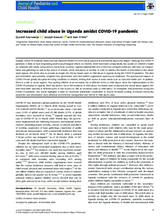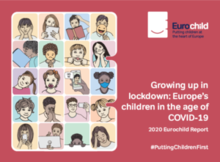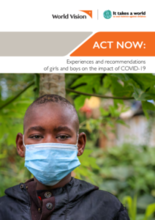This section highlights tools and resources for child protection in the COVID-19 pandemic.
Displaying 21 - 30 of 264
This paper asks the questions: What can we learn from the pandemic—and federal, state, and local governmental responses— about the cracks in the child welfare system? What lessons can be carried forward post-pandemic?
In order to address the dearth of information in less developed regions, this article aims to provide an insight into the increased cases of child abuse in Uganda during the COVID‐19 pandemic.
These Practitioner Guidance Papers share the approaches of five Family for Every Child members in adapting existing helplines or setting up new ones during the COVID-19 pandemic
In this commentary, the authors suggest that a focus on short-term risk in the response to COVID-19 may obscure support for children’s long-term outcomes.
The current paper aims to suggest a framework for risk and protective factors that need to be considered in child protection in its various domains of research, policy, and practice during and after the COVID-19 pandemic.
The current paper aims to suggest a framework for risk and protective factors that need to be considered in child protection in its various domains of research, policy, and practice during and after the COVID-19 pandemic.
More than 100 child participants across East Asia convened with government officials to discuss the increased instances of child violence experienced during COVID-19 at World Vision’s Asia Pacific Child Well-Being Learning Exchange forum on 18 November 2020.
Following thousands of comments and responses posted by the 8,000 course participants for the MOOC on COVID-19: Adapting Child Protection Case Management, as well as research and evidence being issued by child protection agencies, three international experts were invited to provide short videos containing advice and opinions of experts in different regions of the world regarding the need to plan for support for children for the evolving situation of COVID-19 and in particular post-pandemic scenario.
This report reflects on the effects of the coronavirus pandemic on children. It compiles information gathered from 25 countries across Europe, and provides recommendations for improving public policies in the short and long-term to support better outcomes for children and families, including children in alternative care or at risk of separation.
This global report is a consolidation of six regional reports based on consultations conducted between April and August 2020 that used a qualitative approach. The report is organised around the three themes emerging from the data: (1) the impacts of COVID-19 on children and young people; (2) their resilient responses to these impacts personally, in their families and communities; and (3) the support that children and young people need to be safe, healthy and help to fight the further spread of the virus.





